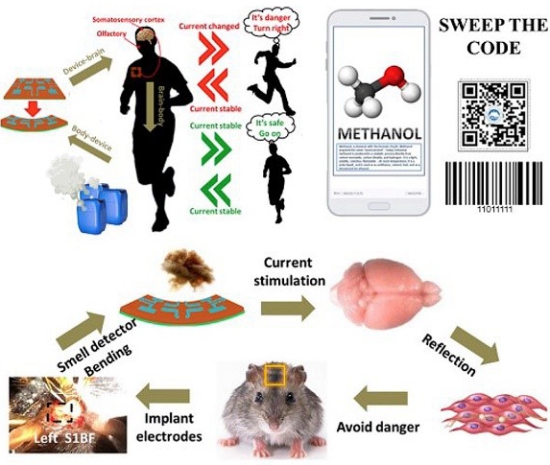
Working with colleagues at University of Electronic Science and Technology of China, Prof. ZHAN Yang’s group at the Shenzhen Institutes of Advanced Technology (SIAT) of the Chinese Academy of Sciences has constructed an artificial olfactory system based on self-powered nano-generator.
This device can sense different odor molecules and recognize different odors. The device has been demonstrated in vivo in animal models. The study titled “An artificial triboelectricity-brain-behavior closed loop for intelligent olfactory substitution” was published on Nano Energy.
Odor processing is important to many species. Specific olfactory receptors located on the neurons are involved in odor recognition. These different olfactory receptors form patterned distribution.
Inspired by the biological receptors, the teams collaborated on formulating an artificial olfactory system. Through nano-fabrication on the soft materials and special alignment of material structures, the teams built a self-power device that can code and differentiate different odorant molecules.
This device has been connected to the mouse brain to demonstrate that the olfactory signals can produce appropriate neural stimulation. When the self-powered device generated the electric currents, the mouse displayed behavioral motion changes.
This study, inspired by the biological olfactory system, provides insights on novel design of neural stimulation and brain-machine interface.
 The signal transmitted into mouse brain can participate in mouse perception and act as the brain stimulator. (Image by Prof. ZHAN Yang)
The signal transmitted into mouse brain can participate in mouse perception and act as the brain stimulator. (Image by Prof. ZHAN Yang)

86-10-68597521 (day)
86-10-68597289 (night)

52 Sanlihe Rd., Xicheng District,
Beijing, China (100864)

